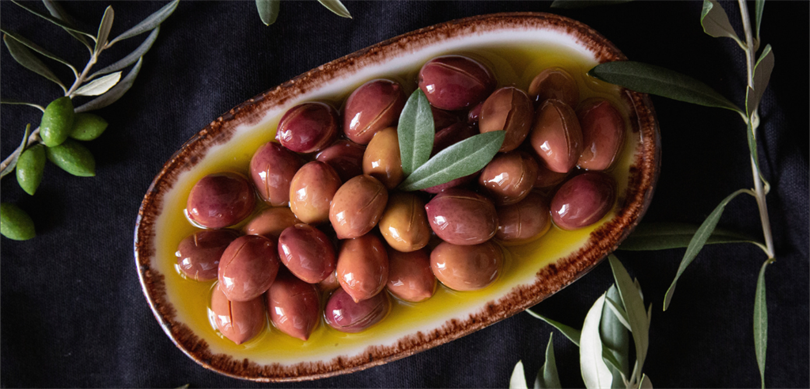Milas olive and olive oil are agricultural products with high economic and cultural value, obtained from olive varieties specific to the region, cultivated in the Milas district of Muğla province, Türkiye, and its surrounding areas.
History of Olive Cultivation and Regional Characteristics
Milas and its surroundings stand out as one of the important centers for olive production in the Aegean Region. The most characteristic type of olive cultivated in the region is the local variety known as “Memecik”. This variety attracts attention with its adaptability to climatic conditions and high oil content. A large part of the olive groves are located on slopes, and traditional methods are used for maintenance and harvesting. This centuries-old production culture is one of the fundamental components of both rural life and the local economy in Milas.

Natural Brined Milas Olive (Ministry of Agriculture and Forestry)
Geographical Indication Process
Milas olive and olive oil were registered with a geographical indication by the Turkish Patent and Trademark Office in 2017; subsequently, in 2022, they began to be protected by a geographical indication by the European Union (EU). Thus, Milas olive oil became the first olive oil product from Türkiye to receive EU registration.2 In the official registration announcement of the EU Commission, the distinctive aromatic profile and low acidity of Milas olive oil were emphasized. The protection provided by the geographical indication has guaranteed the quality of the product and the efforts of local producers at an international level.

Olives are Harvested by Shaking Method (AA)
Production Process and Quality Characteristics
In the production of Milas olive oil, early harvested Memecik olives are used. After harvesting, the olives are processed in a short time using the cold-pressing method. This production method ensures the preservation of the oil's natural aromas and phenolic compounds. The resulting olive oil is characterized by low acidity and a fruity taste. Additionally, the color of Milas olive oil ranges from yellow to green, and it possesses slight bitterness and pungency.
Economic and Social Contributions
Milas olive and olive oil production is one of the main sources of livelihood for the local population. Most local producers operate as small family businesses and combine traditional production methods with modern techniques. The geographical indication registration of the product has both increased producer incomes and contributed to the branding process. The demand for olive oil in domestic and international markets has created a strategic advantage for the Milas economy.
Yield Problems and Agricultural Policies
The main problems encountered in olive production include low yields, the effects of climate change, and difficulties in agricultural labor. Research conducted by the Milas District Directorate of Agriculture and Forestry indicates that yield decreases have been observed in some years, and this is linked to climatic changes. Therefore, technical support, training programs, and sustainable agricultural practices are encouraged for producers in the region.


